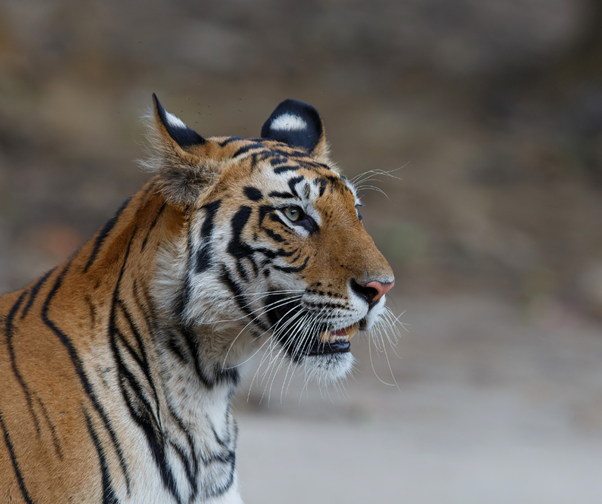A Safari Guide's Tips for Bandhavgarh National Park
Welcome to Bandhavgarh National Park, nestled amidst the
Satpura hills in central India. This famous tiger reserve in Madhya Pradesh is
not only rich in history but also teeming with diverse wildlife. Bandhavgarh
derives its name from a legend, where Lord Ram is said to have gifted a fort to
his younger brother, Laxman. With over 120 tigers and numerous other
fascinating creatures, the park's increased tiger density draws enthusiasts
from around the world. Join me, as I, Daljit, a seasoned safari enthusiast and guide,
share my insights and tips to make your trip to Bandhavgarh an unforgettable
experience.
What sets Bandhavgarh
National Park apart and makes it unique?
Bandhavgarh's allure lies in its abundant wildlife and
varied terrain. The park spans over 1500sqkm and boasts a diverse landscape of
hills, valleys, marshes, meadows, and rivers. This biodiverse haven shelters a
wide range of creatures, from ferocious carnivores to delicate butterflies. Moreover,
Bandhavgarh's historical significance adds a layer of mystique to the
experience. Sites like Badi Gufa, a 10th-century cave that once housed ancient
armies, and Three Cave Point, providing shelter to animals, are worth
exploring. Legends suggest that even Sant Kabir and Tansen have spent time in
this majestic land.
What wildlife can be
spotted at Bandhavgarh National Park?
Prepare to be amazed by the incredible wildlife diversity at
Bandhavgarh. The park is home to approximately 37 mammal species and over 250
bird species. The highlight, of course, is the majestic tiger, along with other
prominent residents like leopards, sloth bears, jackals, and wild dogs. Keep a
keen eye out for the graceful sambar deer, spotted deer, and the elusive
barking deer. Birdwatchers will be delighted to spot over 300 avian species,
including pond herons, white-necked storks, coppersmith barbets, sarus cranes,
Asian green bee-eaters, and scarlet minivets.
Optimal Timing for
Exploring Bandhavgarh National Park
Safaris in the core zones of Bandhavgarh are operational
from 1st October to the end of June, excluding the peak monsoon season. For the
best wildlife sightings, plan your visit during the summer months. As the heat
intensifies, natural water sources inside the reserve dwindle, forcing animals
to converge at artificial watering holes along the safari routes. The sparse
foliage also increases the chances of spotting animals and birds in the
wilderness.
If you prefer lush greenery and a more relaxed environment
for animal watching, visit between October and February. During winters, the
forest comes alive with vibrant colors, and animals are at ease, leisurely
moving through their habitat.
Recommended Number of
Safaris for a Three-Night Stay in Bandhavgarh National Park
To truly experience the diversity of Bandhavgarh, I
recommend at least one safari in each of the three core zones. Since animals
freely move between zones, exploring all of them gives you a better chance to
spot different species and witness their unique behaviors.
Safari Slots and
Permit Booking:
Bandhavgarh offers two safari slots daily – morning and
afternoon. The morning safari, from around 6:45 am to 11:30 am, is the
preferred choice as it provides ample time for wildlife exploration. Book your permits
online via the Madhya Pradesh forest office's website well in advance to secure
your slot. Permits cost Rs2,450 for weekdays and Rs3,050 for weekends and
festival dates. Be sure to plan ahead, as the number of jeeps allowed per shift
is limited.
Booking a Jeep and
Guide for Your Bandhavgarh National Park Adventure
Once you've obtained your permit, visit the forest
department office to be assigned a jeep and guide. The jeep charge is Rs3,000,
and the guide fee is either Rs480 or Rs600, depending on their category. Both
options offer similar experiences, so you can choose based on your preference.
Many hotels can handle the bookings on your behalf for added convenience.
The Best Zones in
Bandhavgarh:
Though Bandhavgarh previously lacked formal zoning, today it
has three core and four buffer zones. Of these, Tala Zone stands out as a
must-visit. As the oldest core zone, Tala is famous for its natural beauty and
abundance of wildlife. The Charan Ganga river flowing through Tala is a hotspot
for animal sightings, particularly during summers when many creatures are drawn
to the water source.
Activities Beyond
Jeep Drives:
Aside from the exhilarating jeep drives, hotels near the
park offer a plethora of activities. Take part in bird-watching trips, nature
walks, and tribal village visits to immerse yourself in the local culture. The
village visits provide a fascinating insight into the traditions, practices,
and traditional medicine-making of the local communities.
The Best Hotels to
Stay in Bandhavgarh:
Choosing the right accommodation is crucial for an
exceptional experience. Among the top options are Bagh Tola Bandhavgarh, Mahua
Kothi - A Taj Safari, Samode Safari Lodge, and Tree House Hideaway. These
establishments offer a unique stay amidst the wilderness, combining comfort and
proximity to the national park.
How to Reach
Bandhavgarh National Park:
The closest airport connected to major cities is Jabalpur,
providing a four-hour drive to the park. For those traveling by train, Katni
Junction (100km drive) or Umaria (33km drive) are the nearest railway stations.
Bandhavgarh National Park beckons with its untamed beauty,
thriving wildlife, and historical significance. With my tips and insights, I
hope you have all the information you need to plan an extraordinary safari
adventure. Whether you seek close encounters with the majestic tigers or wish
to immerse yourself in the park's scenic wonders, Bandhavgarh promises an
unforgettable experience for all nature enthusiasts. So, pack your bags, set
out on this thrilling journey, and let the wilderness of Bandhavgarh captivate
your soul.


